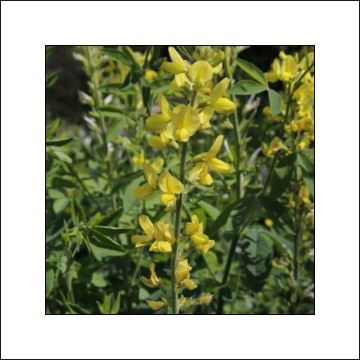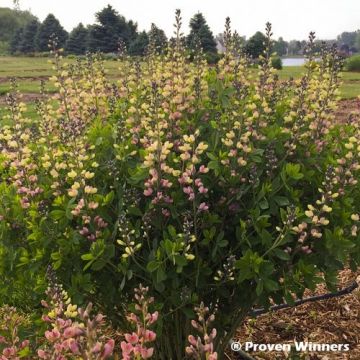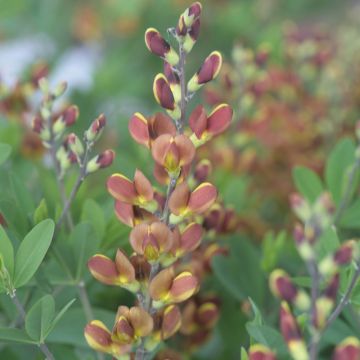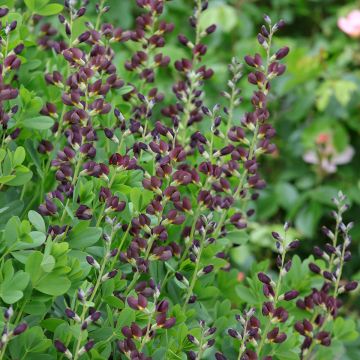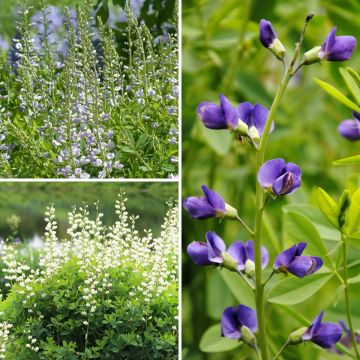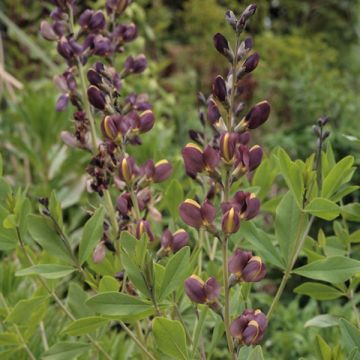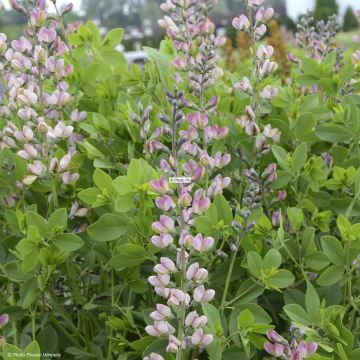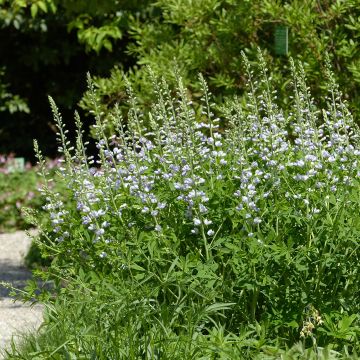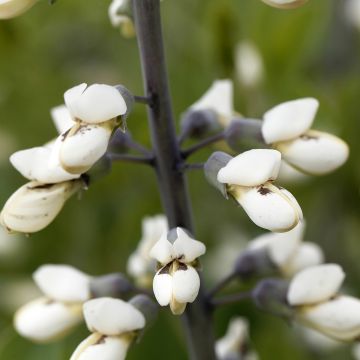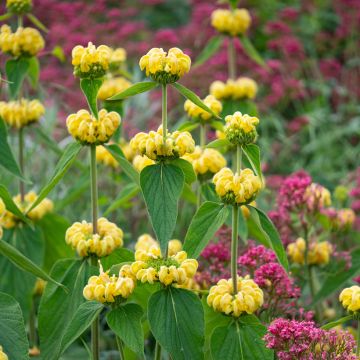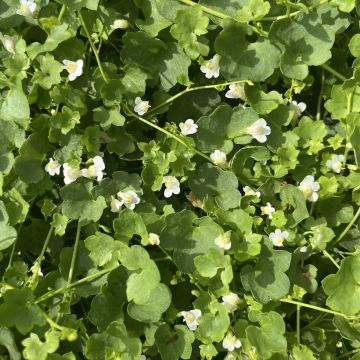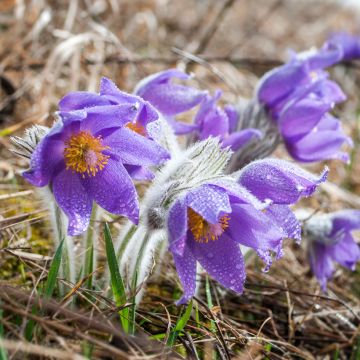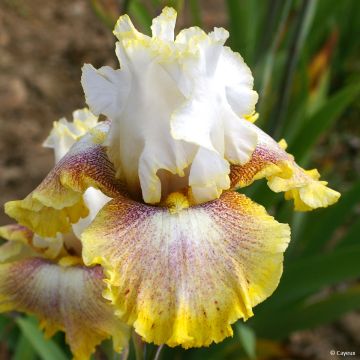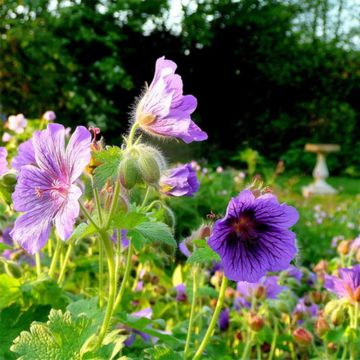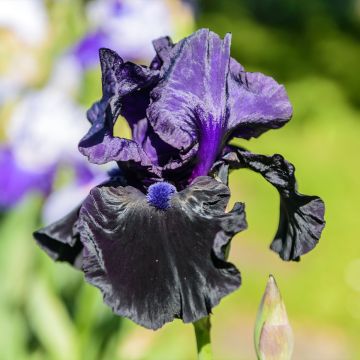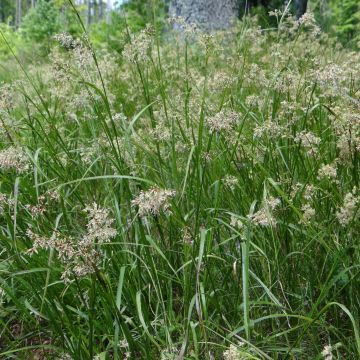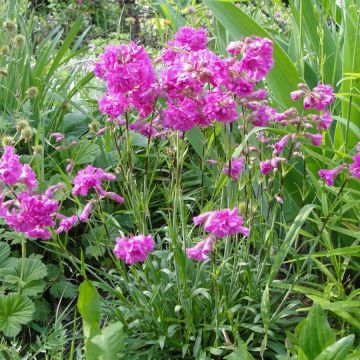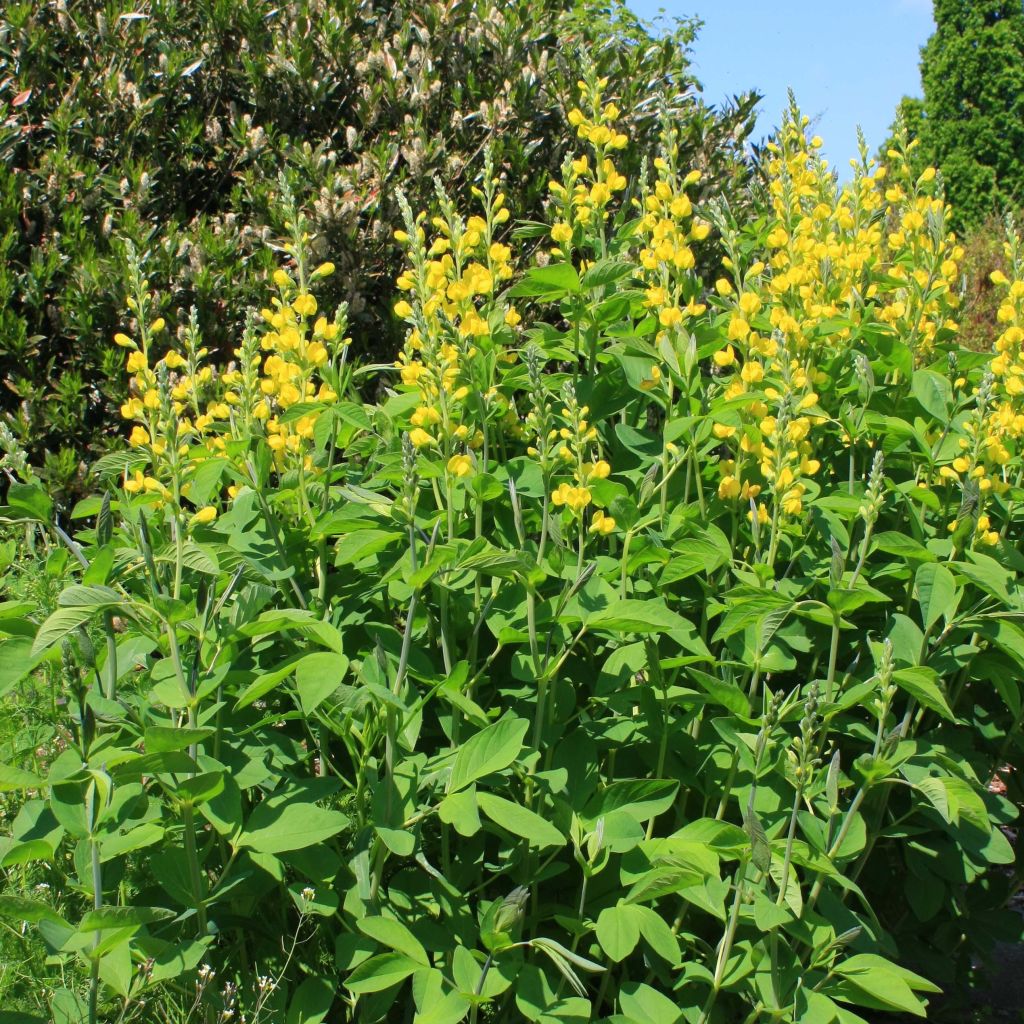

Baptisia sphaerocarpa
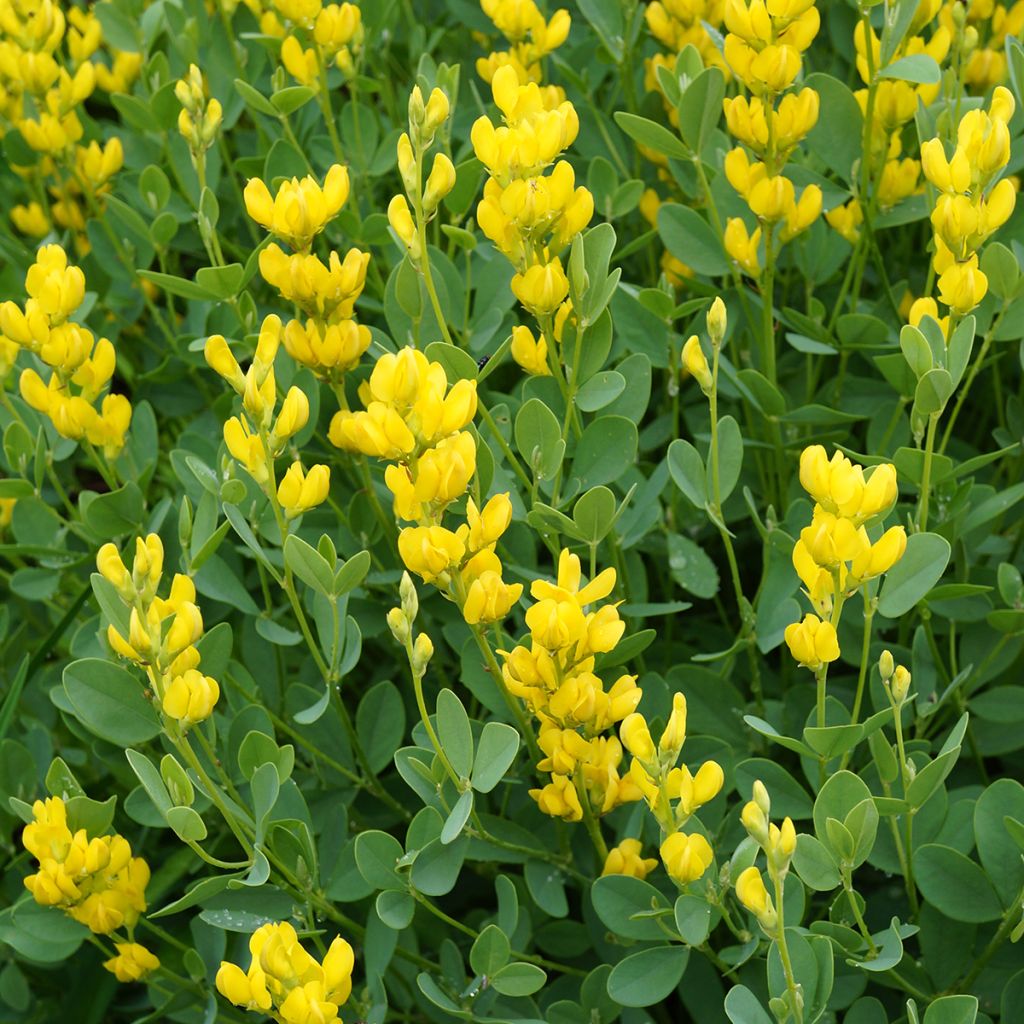

Baptisia sphaerocarpa
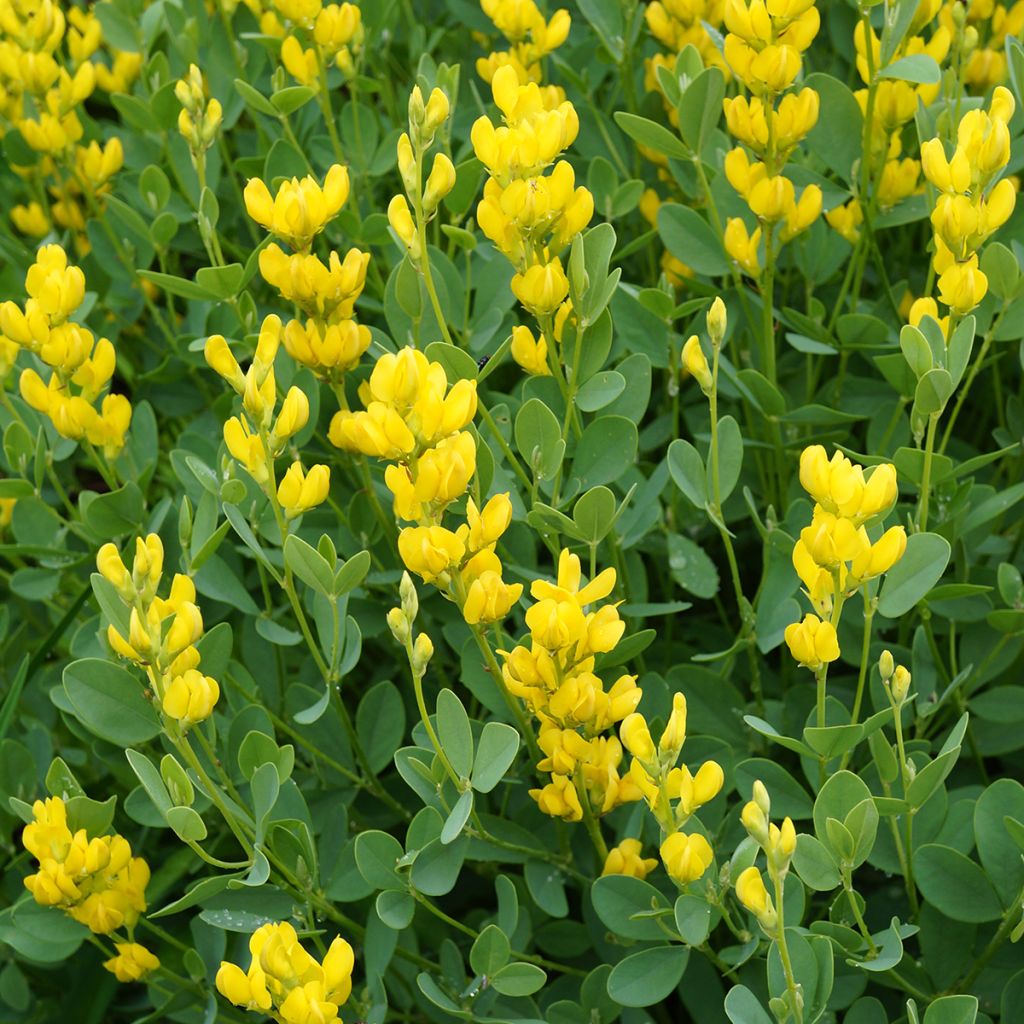

Baptisia sphaerocarpa
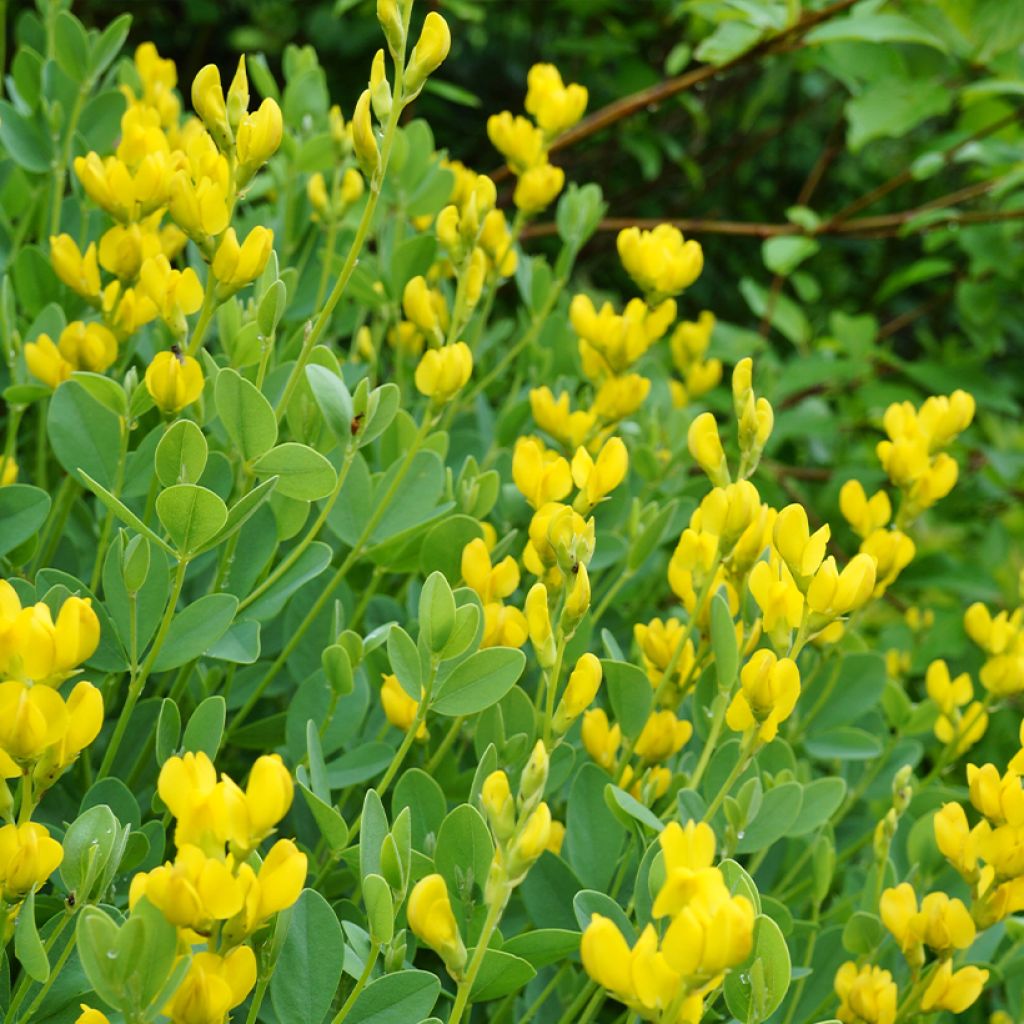

Baptisia sphaerocarpa
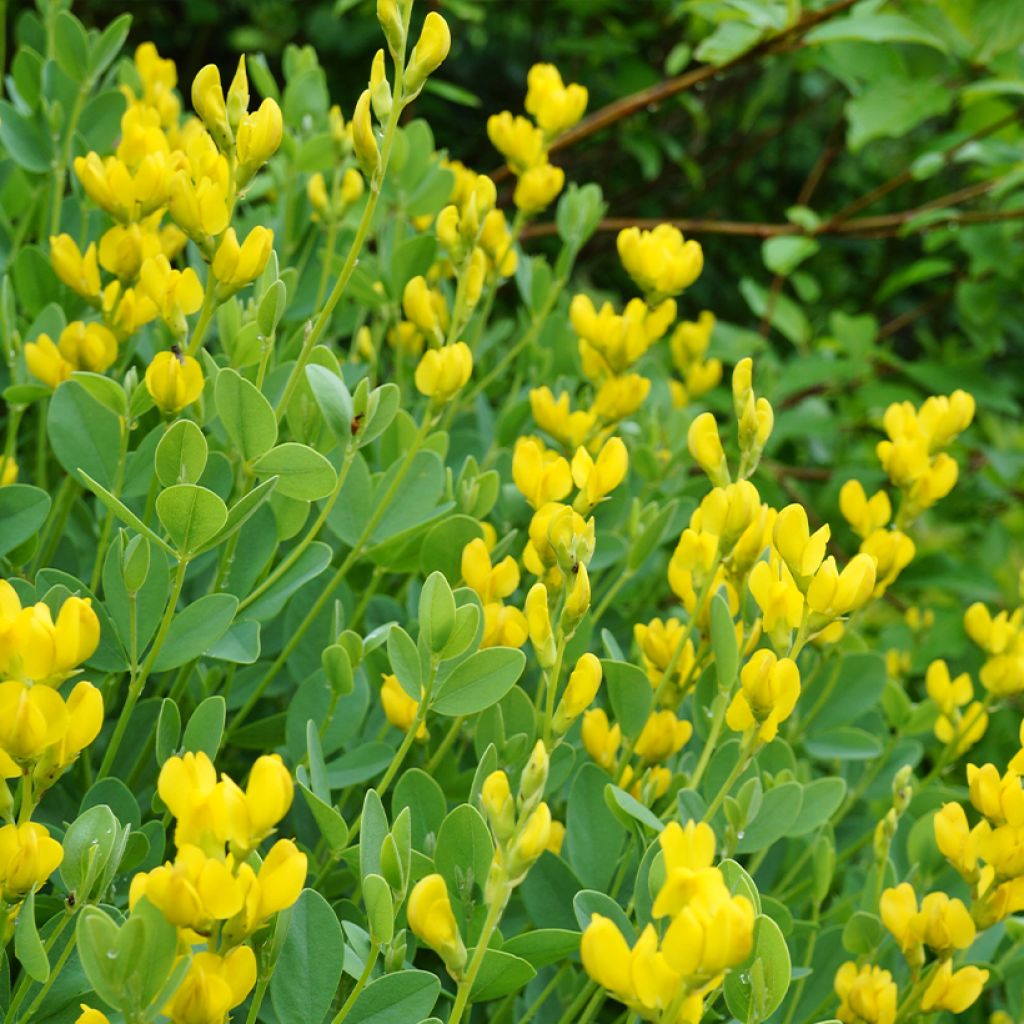

Baptisia sphaerocarpa
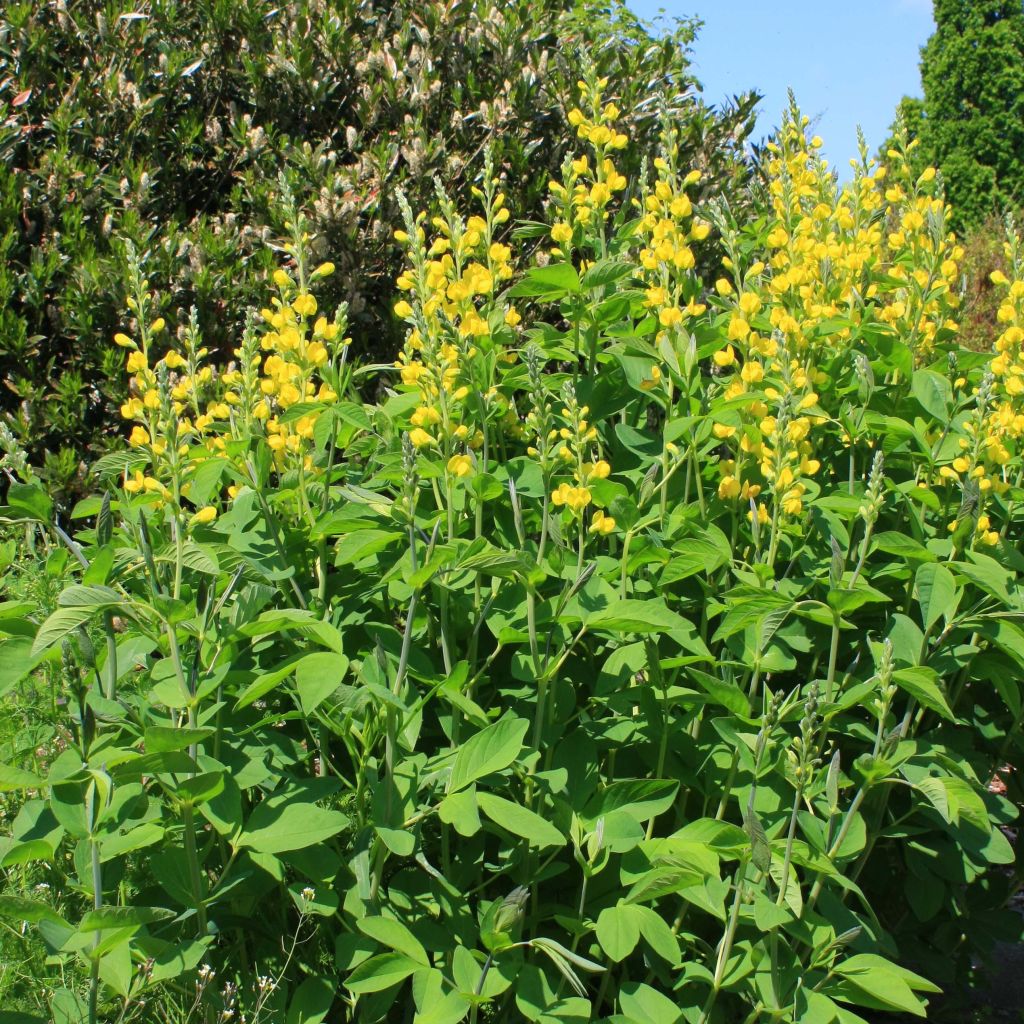

Baptisia sphaerocarpa
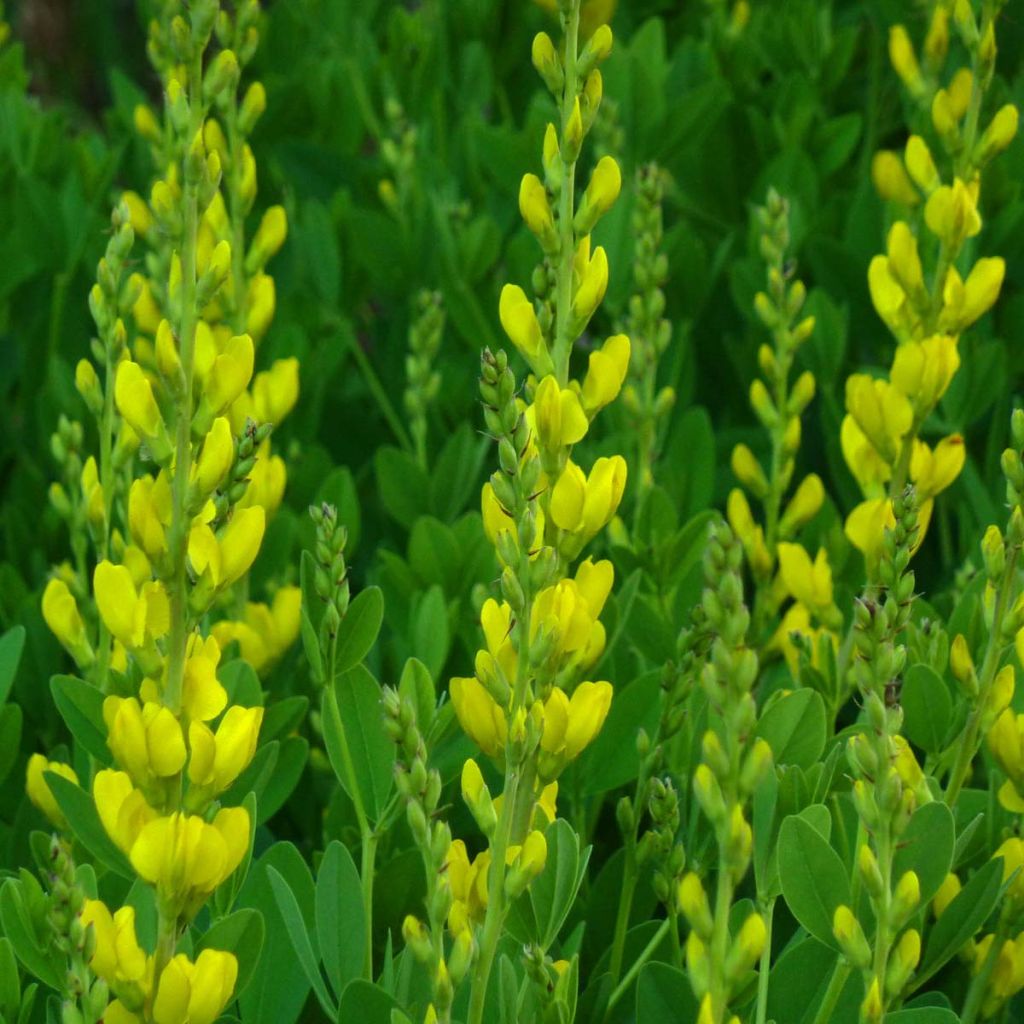

Baptisia sphaerocarpa
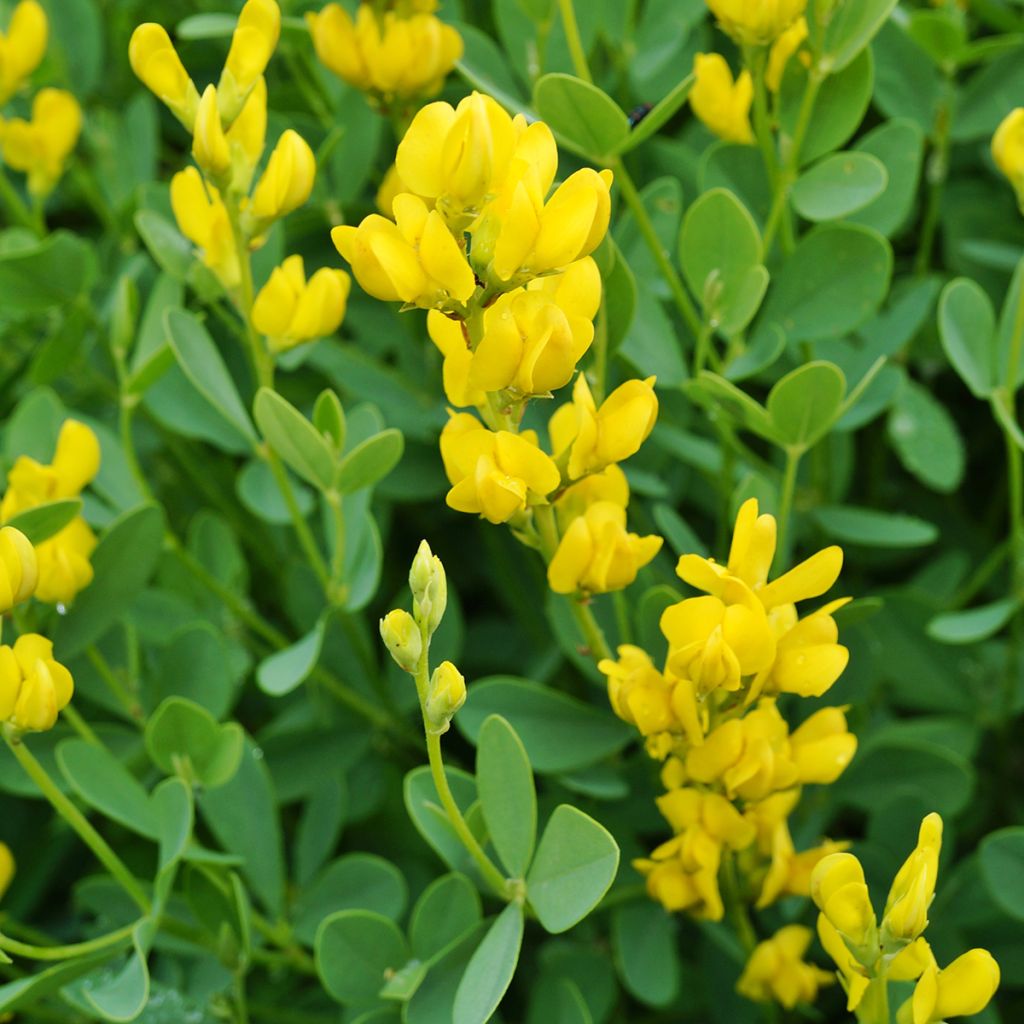

Baptisia sphaerocarpa
Baptisia sphaerocarpa
Baptisia sphaerocarpa
Yellow Wild Indigo, Green Wild Indigo
This item cannot be shipped to the selected country
Delivery charge from €5.90
More information
Schedule delivery date,
and select date in basket
This plant carries a 12 months recovery warranty
More information
We guarantee the quality of our plants for a full growing cycle, and will replace at our expense any plant that fails to recover under normal climatic and planting conditions.
From €5.90 for pickup delivery and €6.90 for home delivery
Express home delivery from €8.90.
Does this plant fit my garden?
Set up your Plantfit profile →
Description
Baptisia sphaerocarpa (synonym Baptisia viridis), also known as yellow false indigo, is a tall perennial related to lupins, a sun-loving but undemanding plant, stunning even in poor soils. Long spikes adorned with bright yellow pea-like flowers appear in spring, standing out from a lush clump of clover-like foliage, with a slightly glaucous blue-green colour that is both elegant and charming. The flowers give way to swollen and spherical pods that turn almost black when mature, extremely decorative in dried bouquets. A bit slow to establish, this baptisia is a very hardy plant that is drought-resistant once established, spreading over time and living for many years with almost no maintenance. It is perfect in borders, in a romantic or natural garden. Plant it in full sun, in well-drained, acid to neutral soil, even poor soil.
Baptisia sphaerocarpa is a perennial plant in the legume family native to the southern United States, specifically Louisiana, Texas, northern Missouri, and Oklahoma. All Baptisias grow naturally in meadows and woods, among tall grasses, without fuss, perfectly tolerant of frost and dry summers. Most of them prefer non-calcareous, sandy soils.
The Yellow false indigo slowly forms a large, bushy, dense, and rounded clump, reaching about 70cm (28in) in all directions at maturity. It flowers in May-June, with numerous spikes of large papilionaceous flowers in a pure and vivid yellow, measuring 30 to 38cm (12 to 15in) in length. After pollination by insects, the flowers give way to curious, swollen, and rounded fruits, whose appearance of small spheres inspired the species name, sphaerocarpa (literally fruit in the shape of a sphere). When mature, these pods, curiously ending in a thin stem, display a beautiful very dark brown colour. The foliage, which disappears in winter, is also very ornamental when swaying in the wind. It consists of leaves divided into three rounded leaflets, measuring 2.5cm (1in), sometimes only two or even just one, resembling those of alfalfa or clover. This plant develops from a unique root system that dives very deep into the soil to extract and transform nutrients thanks to the presence of symbiotic bacteria housed in small nodules. Like all legumes, this Baptisia enriches the soil in which it grows. It is able to grow and bloom abundantly in poor soils. An overly fertile soil will favor the production of stems and foliage at the expense of flowering.
Baptisias are close relatives of lupins, which are much more well-known and used in Europe, but they are much less demanding in terms of humidity and have a much less rigid, infinitely more natural appearance. They share a preference for acidic soils with lupins. They have very robust roots that allow them to live for a long time in our gardens but require time to establish. A true all-terrain plant, the yellow false indigo will find its place in a romantic garden, a dry garden, or in natural areas. It is also useful for decorating a degraded land, which often surrounds a recently built house. It looks stunning when planted alongside roses, Indigofera gerardiana, Eremurus himalaicus, or Allium bulgaricum. It also pairs well with purple linarias or hybrid mulleins, which are equally spectacular.
The vernacular name 'false indigo' comes from the use that some Native American peoples made of these dye plants. Indeed, they provide colouring pigments comparable to those of true indigos (of the Indigofera genus), but of lesser quality.
Report an error about the product description
Baptisia sphaerocarpa in pictures
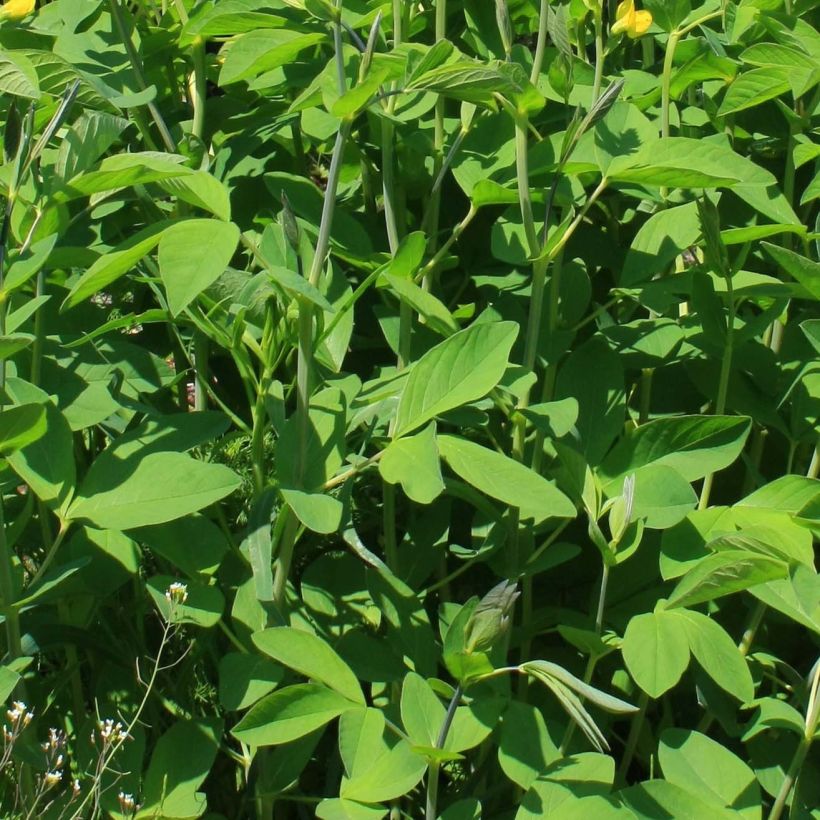

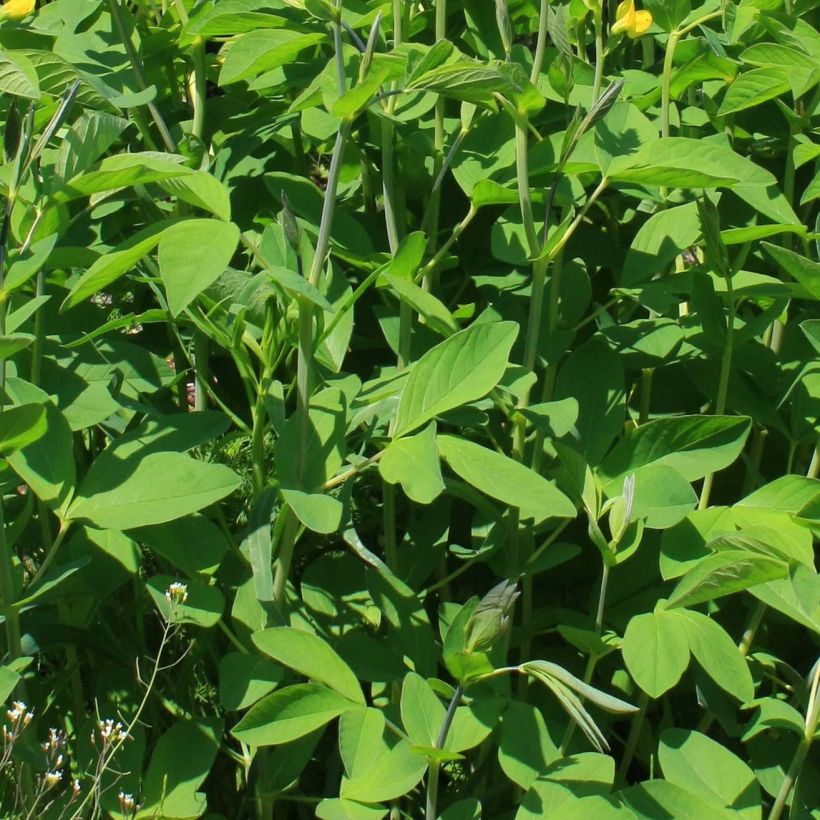



Flowering
Foliage
Plant habit
Botanical data
Baptisia
sphaerocarpa
Fabaceae
Yellow Wild Indigo, Green Wild Indigo
Cultivar or hybrid
Other Baptisia
Planting and care
Baptisia prefer lime-free, well-drained poor soils.
Planting period
Intended location
Care
This item has not been reviewed yet - be the first to leave a review about it.
Spring flowering perennials
Haven't found what you were looking for?
Hardiness is the lowest winter temperature a plant can endure without suffering serious damage or even dying. However, hardiness is affected by location (a sheltered area, such as a patio), protection (winter cover) and soil type (hardiness is improved by well-drained soil).

Photo Sharing Terms & Conditions
In order to encourage gardeners to interact and share their experiences, Promesse de fleurs offers various media enabling content to be uploaded onto its Site - in particular via the ‘Photo sharing’ module.
The User agrees to refrain from:
- Posting any content that is illegal, prejudicial, insulting, racist, inciteful to hatred, revisionist, contrary to public decency, that infringes on privacy or on the privacy rights of third parties, in particular the publicity rights of persons and goods, intellectual property rights, or the right to privacy.
- Submitting content on behalf of a third party;
- Impersonate the identity of a third party and/or publish any personal information about a third party;
In general, the User undertakes to refrain from any unethical behaviour.
All Content (in particular text, comments, files, images, photos, videos, creative works, etc.), which may be subject to property or intellectual property rights, image or other private rights, shall remain the property of the User, subject to the limited rights granted by the terms of the licence granted by Promesse de fleurs as stated below. Users are at liberty to publish or not to publish such Content on the Site, notably via the ‘Photo Sharing’ facility, and accept that this Content shall be made public and freely accessible, notably on the Internet.
Users further acknowledge, undertake to have ,and guarantee that they hold all necessary rights and permissions to publish such material on the Site, in particular with regard to the legislation in force pertaining to any privacy, property, intellectual property, image, or contractual rights, or rights of any other nature. By publishing such Content on the Site, Users acknowledge accepting full liability as publishers of the Content within the meaning of the law, and grant Promesse de fleurs, free of charge, an inclusive, worldwide licence for the said Content for the entire duration of its publication, including all reproduction, representation, up/downloading, displaying, performing, transmission, and storage rights.
Users also grant permission for their name to be linked to the Content and accept that this link may not always be made available.
By engaging in posting material, Users consent to their Content becoming automatically accessible on the Internet, in particular on other sites and/or blogs and/or web pages of the Promesse de fleurs site, including in particular social pages and the Promesse de fleurs catalogue.
Users may secure the removal of entrusted content free of charge by issuing a simple request via our contact form.
The flowering period indicated on our website applies to countries and regions located in USDA zone 8 (France, the United Kingdom, Ireland, the Netherlands, etc.)
It will vary according to where you live:
- In zones 9 to 10 (Italy, Spain, Greece, etc.), flowering will occur about 2 to 4 weeks earlier.
- In zones 6 to 7 (Germany, Poland, Slovenia, and lower mountainous regions), flowering will be delayed by 2 to 3 weeks.
- In zone 5 (Central Europe, Scandinavia), blooming will be delayed by 3 to 5 weeks.
In temperate climates, pruning of spring-flowering shrubs (forsythia, spireas, etc.) should be done just after flowering.
Pruning of summer-flowering shrubs (Indian Lilac, Perovskia, etc.) can be done in winter or spring.
In cold regions as well as with frost-sensitive plants, avoid pruning too early when severe frosts may still occur.
The planting period indicated on our website applies to countries and regions located in USDA zone 8 (France, United Kingdom, Ireland, Netherlands).
It will vary according to where you live:
- In Mediterranean zones (Marseille, Madrid, Milan, etc.), autumn and winter are the best planting periods.
- In continental zones (Strasbourg, Munich, Vienna, etc.), delay planting by 2 to 3 weeks in spring and bring it forward by 2 to 4 weeks in autumn.
- In mountainous regions (the Alps, Pyrenees, Carpathians, etc.), it is best to plant in late spring (May-June) or late summer (August-September).
The harvesting period indicated on our website applies to countries and regions in USDA zone 8 (France, England, Ireland, the Netherlands).
In colder areas (Scandinavia, Poland, Austria...) fruit and vegetable harvests are likely to be delayed by 3-4 weeks.
In warmer areas (Italy, Spain, Greece, etc.), harvesting will probably take place earlier, depending on weather conditions.
The sowing periods indicated on our website apply to countries and regions within USDA Zone 8 (France, UK, Ireland, Netherlands).
In colder areas (Scandinavia, Poland, Austria...), delay any outdoor sowing by 3-4 weeks, or sow under glass.
In warmer climes (Italy, Spain, Greece, etc.), bring outdoor sowing forward by a few weeks.

































